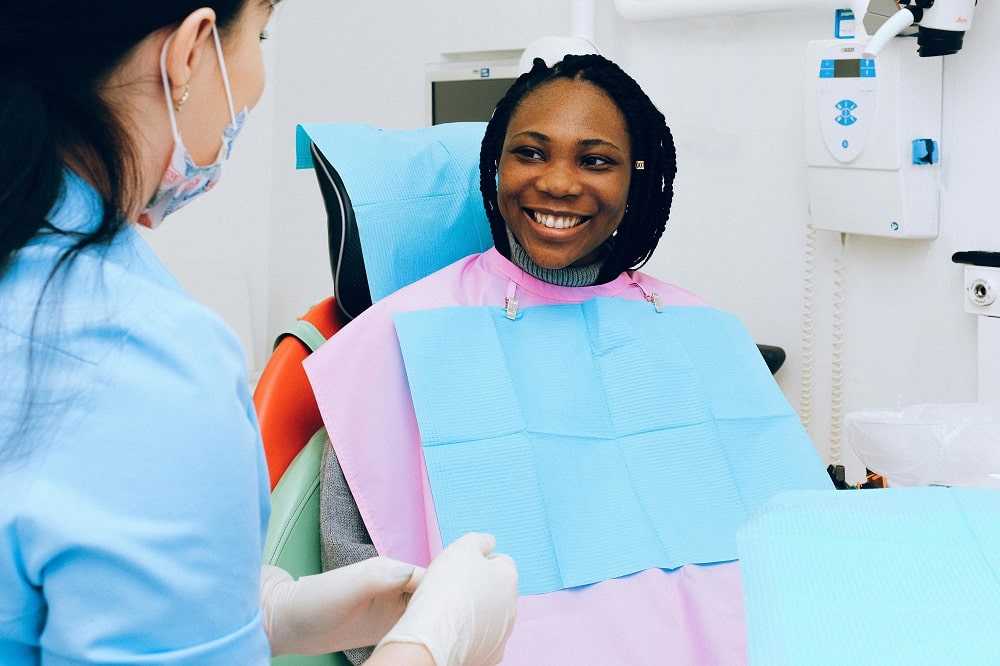How to communicate effectively with patients
This article provides guidance on how to talk to your patients in an effective way. This will build trust and create a good rapport so that patients will feel comfortable talking to you.
As dental nurses, you represent the practice in every conversation and mode of communication you have with the patients. Are you a proud member who contributes positively to your practice’s reputation? Being prepared and knowing how to communicate effectively with your patients can create a strong relationship with patients and colleagues.
In today’s busy working environments where time is of the essence, it is difficult to find time to communicate effectively with your patients. We all know that dentists are always under pressure to keep to the allocated time slot for each patients, so how could you, as dental nurses, help to ease that pressure and make communication between the dental team and the patient more productive?
Patients now want to have an interactive experience at the practice, and the dynamics of this relationship between dental nurse and patient can play a significant part in not only retaining that patient, but also helping them to become ambassadors to promote your practice. The General Dental Council’s (2013) Standards for the Dental Team state that patients should be treated with dignity and respect. As a dental nurse, you should know how you could help the practice and yourself comply with this. As you represent the dentist and the practice as a whole, the most important aspect to begin with is to ensure that you have proper training on effective communication with patients.
Skills and attributes to possess
There are a number of general skills you might find useful to help create a positive and productive relationship between yourself and the patient, which are discussed in the following sections.
First impressions
You should take some time to prepare for the initial meeting with a patient. There is no second chance to make a good first impression. Aside from washing your hands and straightening your apparel, ensure that you have a warm smile on your face and you are ready for action.
Greetings
Ensure you greet your patients. Sometimes it is hard—especially when you are very busy—but patients are more likely to be open and follow advice if they have a good relationship with you. So anything you can do to build rapport is not just a nicety—it is an essential part of patient care. Greet your patients positively with a smile and say hello, calling the patient by name (first name or surname, whichever the patient prefers).
Make a connection
Use open-ended questions as ice breakers, such as:
- ? Are you from around here?
- ? What kind of work do/did you do?
- ? Do you have children/grandchildren? How many do you have? What are there names?
- ? What do you do for fun? Do you have any hobbies?
Try and find at least three things about the patient you can tell the dentist, and make a note on the patient records for next time to remind yourself.
Patience
Even if there is a queue of patients waiting to be seen, do not rush, and ensure the patient in the surgery chair is your first priority—make them feel as if they are the most important person in the practice. Focus your attention on them. It takes time for some patients to talk comfortably. This is especially true if a patient does not engage in small talk and is reluctant to talk about sensitive or personal issues.
Listen
Listen to patients with interest and empathy; but most importantly, listen without interrupting. This will give you a head start as they are more likely to tell you their problem, which will mean that you can inform the dentist you are working with to give them the knowledge to help deal with the patient in the best way.
Eye contact
Maintain good eye contact at all times—relate with your eyes, showing sensitivity and compassion. Avoid spending the patient’s visit focusing on a computer screen, writing down information, or reading a chart. Your eye contact should be direct, but intermittent (not staring), and it should be sincere and convey interest.
Trust
Build trust with your patients; this will ensure that the patients feel more comfortable and, in turn, will be able to disclose more information to you.
Questions
Encourage your patients to ask questions and offer opinions about the treatment processes (only if trained to do so). It should help to better inform the patient and lead to more positive outcomes. However while explaining, remember the ‘KISS’ acronym (‘keep it simple, stupid’). If you feel that a patient did not fully understand what was said to them, use reflective phrases to obtain clarification. If there is something a patient has asked you and you are not 100% sure of the answer, do not feel you should answer it, but feel in control by explaining to them that you will get someone who knows more on this area to help explain it to them in more detail.
Body language
Ensure you have a keen understanding of non-verbal behaviours, including facial expressions and body language that the patient might show, especially while a patient is having treatment and may show signs of distress. You may be able to pick up on these and notify the clinician.
Make sure your body language is positive. In the surgery, sit down as this allows you to be at eye level with the patient. Align your body towards the patient, lean in slightly when talking with them, and smile and nod to encourage them to continue speaking. This automatically helps to relax the patient so that he or she will communicate more openly.
Managing expectations
Help manage patient expectations by understanding patients’ knowledge of the treatment they are going to receive. Set aside some time in which you could speak to the patient and ask them if they have any concerns, questions, or if there was anything they did not understand when the dentist was explaining their treatment. See if there are any useful materials you could provide them with to help. This is a crucial part of patient care and will ensure that patients do not feel rushed and that they can speak to someone other than the dentist. A treatment coordinator would help in such situations.
Stay calm
Once the dentist has left the room after treatment, ensure that you are in charge of the atmosphere in the room. Do not look hurried and ensure you are continually talking to the patient (unless they do not like it) and ensure that you are still providing a relaxed atmosphere, rather than banging the instruments and tidying up nosily.
Keep in touch
Keep in touch with the patients by a follow-up call after treatment, or calling them before their next appointment.
Regular training
Encourage the management to have periodic staff training on patient communication.
Ways to improve your relationships
There are many methods to check how you are actually performing, and what patients feel after your interactions with them. The only way to improve your skills are to find out if there are things you could improve on. Ask patients to give you personal feedback, either in a confidential suggestions box or using the Friends and Family Test. This removes any awkwardness if a patient has negative feedback. Positive feedback can be used to demonstrate you are complying with the Care Quality Commission’s (2015) key line of enquiry of being caring.
Another way to improve on your communication is by holding forums or peer review evening with patients. They can then discuss anything they think may help to improve communication. Another way is to role play with your colleagues so that they can assess your communication skills and suggest ways in which to improve.
Conclusion
Communicating with patients is a whole team effort; playing your part in this can help to strengthen these relationships and fine tune your communication skills. It can help to reduce anxiety, conflicts, and create positive outcomes between patients and the dental team. Ensuring that you have periodic training sessions on patient communication and related topics can help maintain a good level of effective communication between
you and the patient. It will also help you to build patients’ trust and you will be able to relay pertinent patient information to the dentist.
In turn, this will allow patients to praise the way your practice treated them, and they will automatically advertise your services to their friends and family, becoming automatic advocates of your practice Through effective communication, you can demonstrate that you are a caring, compassionate and professional dental nurse.


